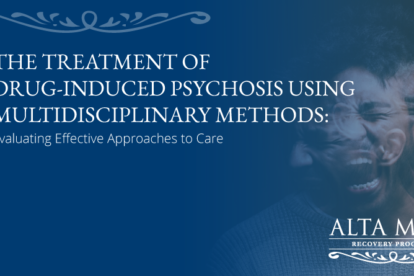
Tramadol and Alcohol Addiction Treatment
Tramadol is an opioid used to treat moderate to moderately severe pain when over-the-counter pain medications have been ineffective. Like other prescription medications used to relieve pain, tramadol has the potential of triggering misuse and addiction. The risk of developing an addiction and experiencing potentially disastrous consequences is increased when tramadol is used in combination with alcohol.
If you take tramadol for medical reasons, it’s possible that you may mix it with alcohol without any thought of negative consequences.
Like most other prescription painkillers, mixing tramadol and drinking can be dangerous.
If you misuse tramadol by taking a higher dose than prescribed, or you’re taking it without a prescription, be aware that you are at even higher risk of serious problems if alcohol is used at the same time.
Effects of Mixing Tramadol and Alcohol
Tramadol is classified as a Schedule IV controlled substance, and it works for pain relief by attaching to receptors in the brain to alter the perception of pain. It also blocks pain signals in the spinal cord.
It is also not uncommon for some people who live with chronic pain turn to alcohol for pain relief, but in most cases it takes more than a moderate amount of alcohol to achieve relief from pain.
Both tramadol and alcohol work as central nervous system depressants. Combining these two substances can greatly exaggerate the effects of either chemical by itself, and combining high doses of the two can be deadly.
Effects of depressants include:
- Drowsiness
- Dizziness
- Slurred speech
- Confusion
- Inability to concentrate
- Lowered blood pressure
- Slowed breathing
The potential for these types of medications to slow breathing is especially dangerous for anyone who has a respiratory illness such as asthma or chronic obstructive pulmonary disease. Overdose of tramadol and alcohol can lead to unconsciousness and possibly death.
The Progression of Addiction to Tramadol and Alcohol
Rarely, if ever, is it anyone’s intention to become addicted.
A person may misuse tramadol because they find they are no longer getting the same effect that they once did at the original dose, so they start taking a higher dose. When this happens, it means the person has developed a tolerance to the drug. And when the dosage of a mind-altering substance is increased in this way, dependence often follows. A person may also combine tramadol with alcohol because they feel they get more pain relief by doing so, or they may be experiencing euphoria or tranquility and are deliberately trying to get high.
Becoming dependent on chemicals may progress to addiction. This happens very quickly in some people and slowly in others. At this point, the addict is compelled to seek out the substance in spite of negative consequences, such as financial problems, marriage problems or job loss. Often, the person believes they can quit at any time, not realizing they have become physically dependent on the substance.
Begin Your Recovery Journey Today
866-922-1350Detoxification From Tramadol and Alcohol
If you realize you have developed an addiction to tramadol and alcohol, talk to your doctor or an addiction treatment professional. When you are physically dependent on strong substances, abruptly stopping is not only unpleasant but can be extremely dangerous.
Withdrawal symptoms you may experience when discontinuing the use of tramadol and alcohol include:
- Sweating
- Anxiety
- Shaking
- Restlessness
- Chills
- Joint or muscle pain
- Nausea and vomiting
- Insomnia
In severe cases, you may experience seizures or hallucinations. Going through detoxification under medical supervision can help reduce the severity of withdrawal symptoms while keeping you safe.
Overcoming Addiction to Both Tramadol and Alcohol
When you have become dependent on more than one substance, recovering from either one requires receiving treatment for both.
Drinking can be a trigger for the use of any mind-altering substance. Recovering addicts need to remain vigilant about things that can trigger a relapse. Since alcohol has a relaxing effect on the brain, it can easily trigger cravings for other substances that have the same effect, including tramadol.
Recovery at a residential treatment center for alcohol use disorder and drug addiction starts with detoxification, but once you have gone through detox, you are not cured. You will continue to need a treatment plan, including support groups and an awareness of your triggers. With the help of support groups, such as 12-step programs, group therapy, and intensive outpatient services, you can begin to learn better ways of coping with pain and life stresses, and know what to do if you experience cravings. This type of support makes it possible to recover from dependence on tramadol and alcohol.






